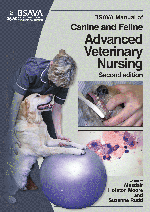
Full text loading...

Provision of fluid therapy is a common task for veterinary nurses. The area is covered in all standard texts for veterinary nurses and technician but often the background information provided uses simple models of understanding that may be inadequate for experienced veterinary nurses or those seeking a deeper understanding of the subject. This chapter provides greater details in many areas that will meet this need and allow veterinary nurses managing fluid therapy to care for these patients with a greater insight into the underlying physiological abnormalities. The chapter informs on Crystalloid-based fluid therapy; Colloid-based fluid therapy; Blood therapy; Central venous catheters; Measurement of central venous pressure; Potassium-related disorders; and Acid-base disorders.
Advanced fluid therapy, Page 1 of 1
< Previous page | Next page > /docserver/preview/fulltext/10.22233/9781905319725/9781905319725.6-1.gif

Full text loading...





